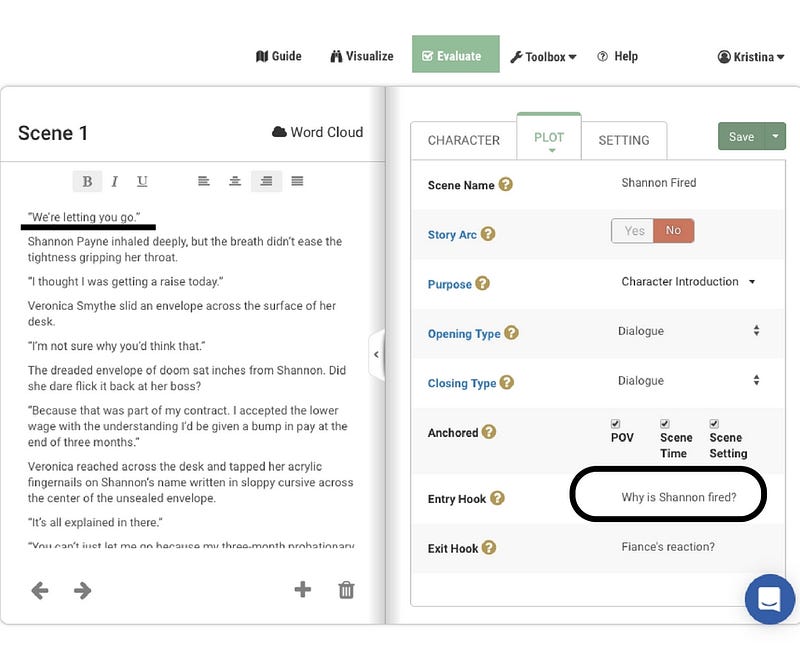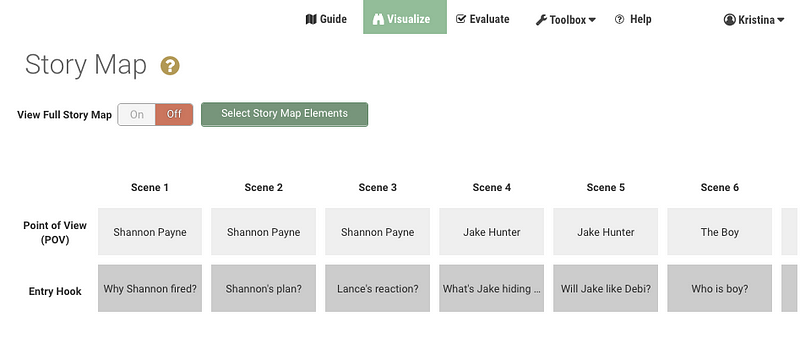Many writing books talk about the importance of the first line, first paragraph and first page of a novel.
If you don’t hook the reader early in your novel, you might lose them for good. Taking that thought and applying it to each scene means evaluating the entry hook for each scene.
There’s a lot of pressure on a writer to produce an extraordinary first line for a novel.
But as with most things, practice will make you better. So start practicing now with the first line of every scene in your novel. By the time you’ve evaluated every scene looking for the entry hook, and maybe rewriting the scene opening for a few, you’ll be ready to go back and rework the first line of your novel.
What Is A Scene Entry Hook?
How many times have you read a book, were a little tired, and not sure if you wanted to start the next scene or chapter? You might read the first few lines of the next scene and then decide to keep reading.
Whatever you read at the beginning of the scene that kept you reading was the scene entry hook.
5 Ways To Hook Your Reader
When creating an entry hook, consider:
- Starting in media res
- Foreshadowing trouble
- Using a strong line of dialogue
- Raising a question
- Not wasting words on extraneous description.
Alternate Your Technique
Alternate your technique so the reader doesn’t get bored. If you don’t know what the hook is or why the reader would keep reading the scene, think about rewriting the scene opening.
Sometimes you might find you’ve started the scene too early. Look at cutting the beginning of the scene until something exciting happens.
If there is description you need, move it to later in the scene if you can. You might just need a little reorganizing of the scene to make the opening sizzle.
How Fictionary StoryTellerCan Help You
StoryTeller is a new interactive web app for self-editing fiction that helps writers turn a first draft into a story readers love.
Below is the opening scene from Look The Other Way (by Kristina Stanley).
The “Entry Hook” key element makes me evaluate each scene and think about whether I’ve used a good entry hook. If I haven’t, then I need to rewrite the opening.

The entry hook is the first line of dialogue. “We’re letting you go.” leaves the reading wondering who is being fired and why.
In Fictionary, you can use the Story Map so evaluate key elements of fiction throughout your story.
Here, I’ve chosen just the point of view character and the entry hook to be shown in the Story Map. This way I can evaluate how I’m drawing a reader into each scene.

Your challenge is to ask yourself if every scene in your novel is has an entry hook.
Post written by Kristina Stanley
Kristina Stanley is the best-selling author of the Stone Mountain Mystery Series and Look The Other Way.
Crime Writers of Canada nominated DESCENT (Imajin Books, July 2015) for the Unhanged Arthur award. The Crime Writers’ Association nominated BLAZE (Imajin Books, Oct 2015) for the Debut Dagger. Imajin Books published her third novel in the series, AVALANCHE, in June 2016.
Luzifer-Verlag published Abwaerts (Descent) in Germany in the fall of 2017.
Her short stories have been published in the Ellery Queen Mystery Magazine and The Voices From the Valleys anthology. She is the author of THE AUTHOR’S GUIDE TO SELLING BOOKS TO NON-BOOKSTORES.
Her short story, WHEN A FRIENDSHIP FAILS, won the 2014 Audrey Jessup with Capital Crime Writers.
Kristina is the CEO of Fictionary, and all of her books were edited using Fictionary.
![]()
StoryTeller is creative editing software for fiction writers. Transform your story, not just your words. Successful stories depend on your ability to edit, improve, and revise your work. Only when you master story editing, can you master storytelling.
Why not check out Fictionary’s StoryTeller free 7-day trial and tell powerful stories?

